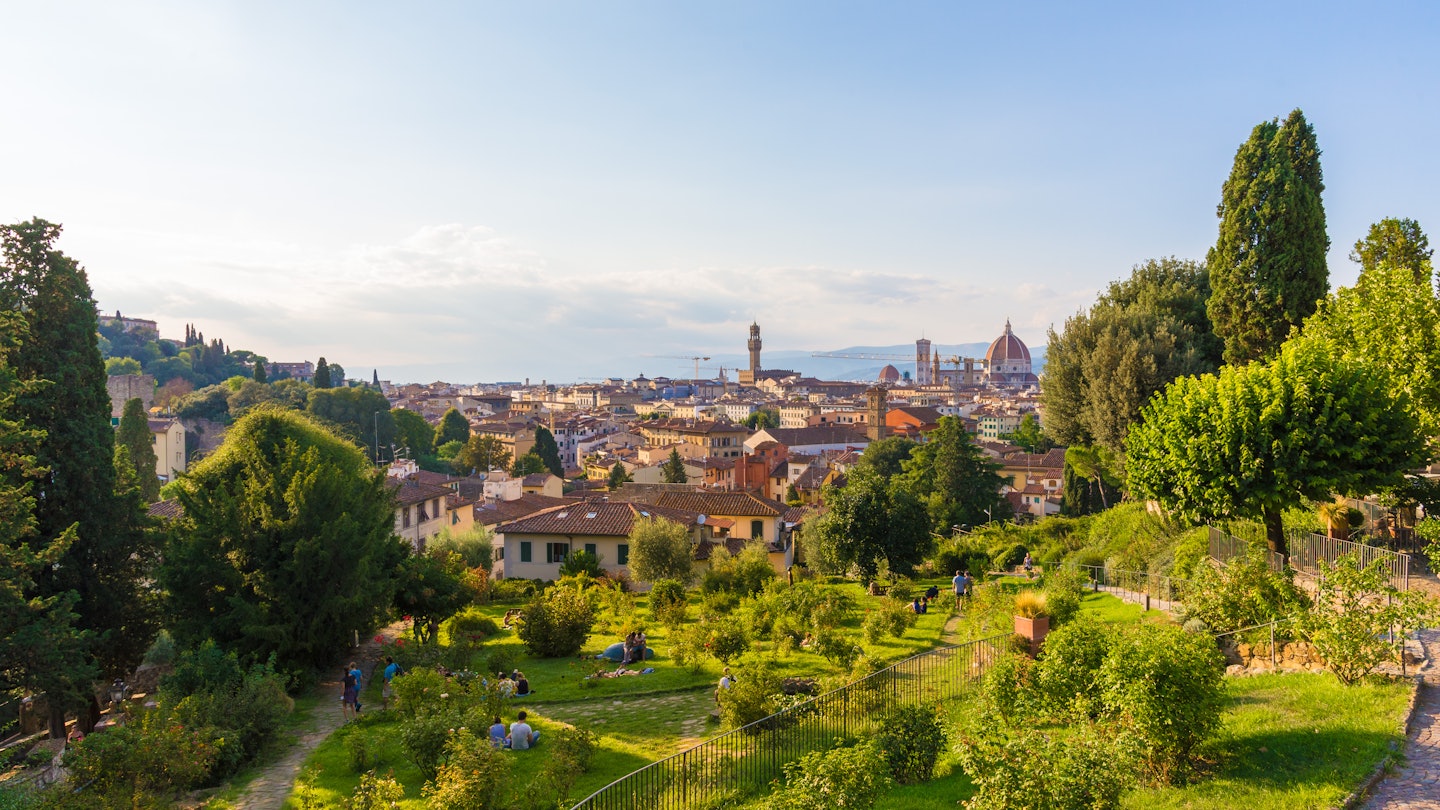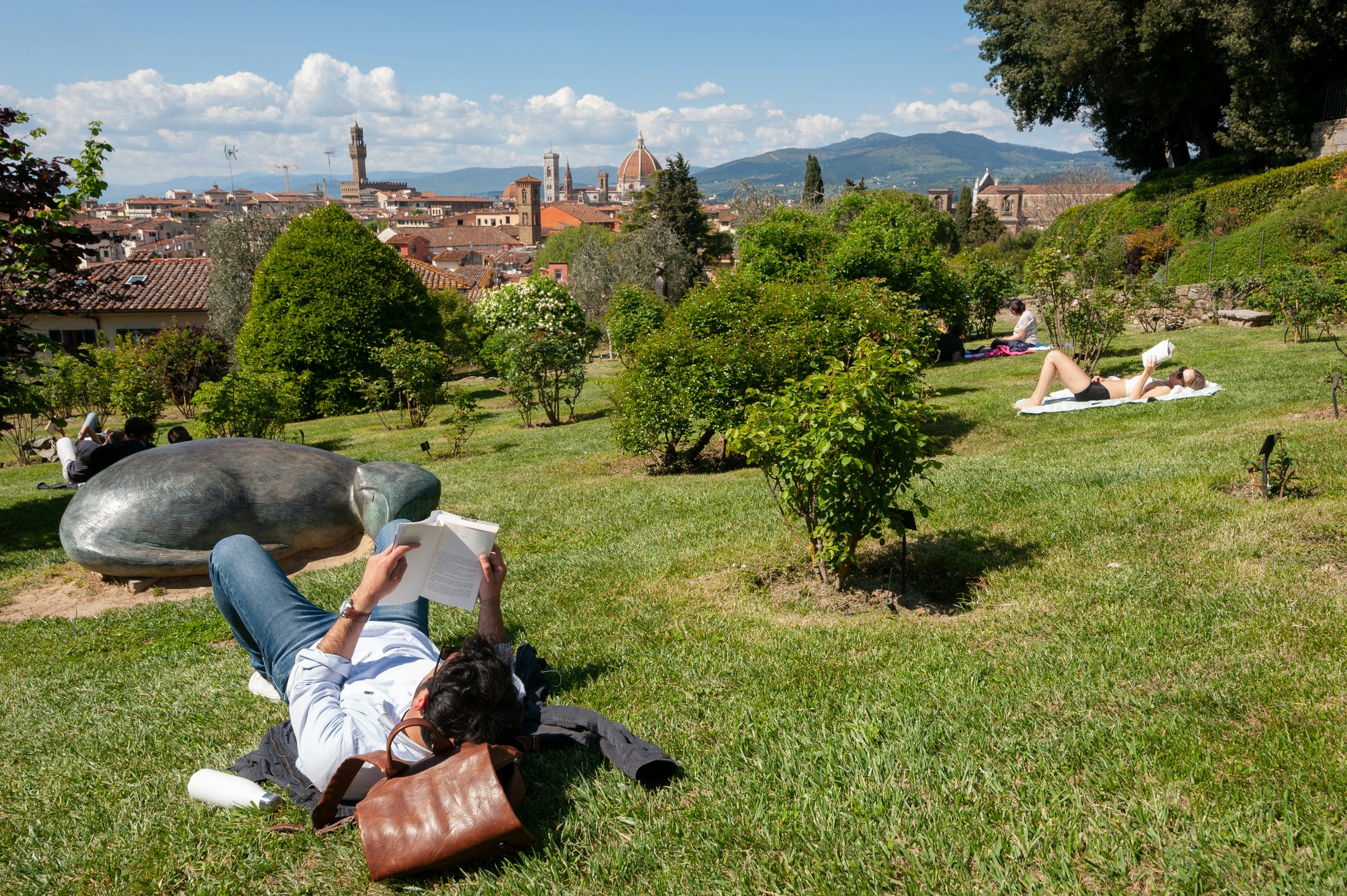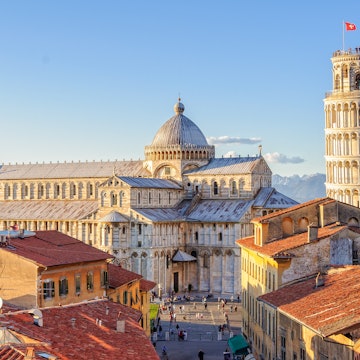

Locals love the hidden gardens dotted around Florence © iStock
Brimming with art and architecture masterpieces, bijou-sized Florence is made for walking.
Yet the urban fabric of this tightly packed Tuscan city hasn’t changed since the Renaissance – meaning scant few modern sweeps of green. For Florentines, it is hidden gardens of historic palazzi that fuel ritual passeggiate (afternoon strolls) in the park.

Giardino di Boboli
Best for Greek god (and people) spotting
Florence’s blockbuster city park, the graceful Boboli Gardens, has waltzed gracefully around terraced flowerbeds, box hedges and shaded cypress alleys behind the monumental palace of Palazzo Pitti in Oltrarno since the 15th century.
The original gardens were designed by architect Niccolò Pericoli for the bombastic Medici clan and have been a popular green oasis for Florentines to watch the world go by at leisure since 1766 when they opened to the public.
Allow a half-day at least to take in the ornamental ponds, fountains and sculptures depicting Jupiter, Apollo and a motley of other well-endowed Greek gods. The giant sculpture of a cracked face by Polish sculptor Igor Mitoraj (1944-2014) is a contemporary highlight.
Don’t miss sweeping views of the surrounding countryside from the terrace in front of the porcelain museum pavilion. End in the lower reaches of the gardens with the fantastical shell- and gem-encrusted Grotto del Buontalenti, a grotto built between 1583 and 1593 for Francesco I de' Medici.
Top tip: When the weekend or summer crowds get too much, duck along the footpath into the lesser-known Giardino Bardini; the gate between the two shuts at 5pm.
Giardino Torrigiani
Best for rare Tuscan flora
The ultimate secret garden, this Tuscan paradise hidden behind high walls squirrels away English-style lawns wrapped around a 16th- and 19th-century villa twinset. The gardens were designed at the height of the Romantic movement in the early 19th century.
Visits by private tour (reserve in advance) reveal dozens of rare tree species, herb and vegetable gardens, sculpted lions, a neo-Gothic Masonic tower, stunningly restored greenhouses and remains of Florence’s city walls built under Cosimo I in 1544 (one of six sets of walls to be built around Florence at different times – spot the segment of older, 14th-century walls outside the garden).
Top tip: To enjoy the gardens from a different perspective (aka sun-lounger on a roof terrace) and bathe in the garden’s green peace and tranquility after hours, overnight at AdAstra, a fashionable B&B in a 16th-century villa on the walled estate.

Giardino Bardini
Best for lunch in the sun
April and May, with colorful azaleas, peonies and wisteria in bloom, are lovely months to visit these elegant hillside gardens in Oltrarno. June unveils a profusion of flowering irises, but every month has a floral charm.
Artificial grottoes, orangery, marble statues, wisteria tunnel and fountains scream Tuscany. The 17th-century villa, named after 19th-century antiquarian art collector Stefano Bardini (1836–1922), houses an art museum with works by early 20th-century Italian painter Pietro Annigoni. Garden and city views from the roof terrace are worth a swoon.
Top tip: Reserve a lunch table at the garden’s La Leggenda dei Frati, a Michelin-starred restaurant with insanely romantic city views from its stone loggia. Seasonal veggies are plucked fresh from its kitchen garden, tucked between waterfalls and ornamental beds.
Santarosa Bistrot
Best for drinks and live music
Hobnob with fashionable Florentines over coffee or cocktails and jazz after dark at this on-trend garden-bistro-bar, snug against a historic chunk of city wall in the teeny Santarosa garden. Comfy cushioned sofas built from recycled wooden crates sit al fresco beneath trees on the lawn – actually a small public park dedicated to the Swiss-born Red Cross founder Henry Dunant.
Top tip: Jazz soirées and other live-music events enliven the garden. In warm weather, grab a picnic hamper for two and enjoy an intimate lunch amid the greenery.

Giardino delle Rose
Best for photo ops
Break the steep staircase hike up to over-touristed Piazzale Michelangelo with a peaceful meander around Florence’s 19th-century rose garden, directly below the panoramic square with thinner crowds and equally soul-soaring city views.
The garden was planted in 1865 and the more than 400 sweetly perfumed rose varieties – at their finest in late Spring – thrive in the blistering sun here, alongside aromatic lemon trees and a dedicated Japanese garden.
Twelve whimsical bronze sculptures by Belgian artist Jean-Michel Folon (1934-2005) provide ample Instagram inspiration: snap the city skyline framed in a suitcase, take a selfie with a bronze man on a bench or loll on the grass with a giant round bronze cat.
Top tip: Continue uphill for another five minutes, past Piazzale Michelangleo, to Basilica di San Miniato al Monte. The city-panorama photo op from the terrace in front of the hilltop Romanesque church is unmatched. Sunset is best.
Giardino dell’Iris
Best for flower-power meditation
The old-world stone walkways, romantic vistas, intoxicating scents and hypnotic kaleidoscope of dazzling orange, pink, purple, red, white, violet and lilac flowers can only be marveled at for four weeks in late April and May when the garden is open to visitors. But the experience is magical.
This spectacular iris garden, in an olive grove below Piazzale Michelangelo, was created in 1954 as show garden for Florence’s International Iris Competition. Each year iris horticulturalists and hybridizers from around the globe send their prized bulbs to Florence to be planted in Giardino dell’Iris; final judging of the late-spring bloom takes place three years later and the overall winner gets a gold florin.
Iris varieties, many rare, are numerous. At the far end of the 2.5-hectare park (6 acres), Japanese and Louisiana irises thrive in marshy land around a small moon-shaped lake.
The iris lily has been the emblem of Florence since the 5th century when the city, besieged by the Goths, was reported to have been saved by the miraculous apparition of Saint Reparata brandishing a blood-red banner emblazoned with a white iris.
Top tip: Study a map of the garden, check precise opening dates and keep up to date with theatre performances, botany workshops and other atmospheric events hosted in the garden on the Italian Iris Society website.
Giardino dei Semplici
Best for bookworms and botanists
When the Florence crowds overwhelm, retreat to the city’s peaceful botanical gardens in San Marco, where fragrant citrus blooms mingle with ancient medicinal plants, Tuscan spices and wildflowers.
The walled garden, with vintage greenhouses and themed footpaths, was created in 1545 to furnish the Medici clan with medicine and is managed by the university today. Don’t miss the magnificent yew tree planted in 1720, and the ornamental cork oak from 1805, as you meander through the gardens.
Top tip: Grab a chunk of schiacciata (Tuscan flatbread) – spiked with salt and rosemary or topped with delicious seasonal goodies – to munch on a bench in the park from the brilliant Pugi bakery on nearby Piazza San Marco.

Parco delle Cascine
Best for jogging and dog-walking
When vast green space beckons, join weekending locals in Florence’s largest city park. The former Medici hunting reserve is a tad shabby in spots, but its 116 hectares (286 acres) buzz with activity at weekends when urbanites flock here to jog, cycle, rollerblade, walk the dog, practice yoga, fly kites, all sorts.
Several playgrounds entertain younger children and what was a bird sanctuary for the Medici clan in the 18th century is now a decent open-air swimming pool (Le Pavoniere; open May-Sep) with kids’ paddling pool, sun loungers, aqua fit classes, snack bar, restaurant and the occasional summertime DJ.
Top tip: Shop for fresh produce and picnic supplies, clothes and cheap homeware at Il Mercato delle Cascine, the city’s largest street market held in the park Tuesday mornings (8am–2pm).
Safety recommendations and restrictions during a pandemic can change rapidly. Lonely Planet recommends that travelers always check with local authorities for up-to-date guidance before traveling during Covid-19.
You may also like:
The 10 best day trips from Florence
How to live like a local in Florence
Feeding my soul: a week in a cooking school in Tuscany
















